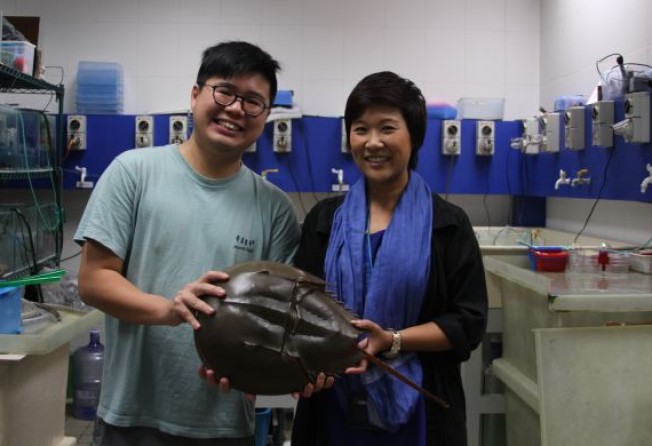City University's Billy Kwan and Joe Cheung Want to Spread Awareness of Horseshoe Crabs
With the help of Hongkong Land, the scientists work along with the Ocean Park Conservation Foundation through the Juvenile Horseshoe Crab Rearing Programme.

Why horseshoe crabs?
Billy Kwan: My first time seeing one, I thought of a battle tank because it was heavy and looked metallic. I was told that it’s a very old creature, it was around before the dinosaurs and it has blue blood.
Joe Cheung: It wasn’t love at first sight because it is not really handsome, but I could see the potential of horseshoe crabs as a tool to tell the public about conservation.
What’s super cool about horseshoe crabs?
JC: These living “dinosaurs” are still crawling around Hong Kong. It’s amazing! We don’t know how they have been able to survive, but they’re already well designed and they didn’t evolve much. They look exactly, or almost exactly, as they did 400 million years ago.
How does the rearing program work?
JC: We convey the conservation message to secondary schools. The horseshoe crab will stay in their school for six to eight months. We really want to create an atmosphere in schools where they talk more about ecology. They look after the crabs and they fall in love with them!
Do people keep these critters as pets?
BK: I do have some friends that keep horseshoe crabs as pets, but we strongly discourage this. On “Goldfish Street” in Mong Kok they do have some horseshoe crab babies, which sell at a very high price. I hope it won’t be popular but there aren’t any regulations or laws to protect them.
Why is it important to protect these crabs?
BK: They reflect how healthy beaches are and how healthy our ecosystem is. A lot of shore animals feed on horseshoe crab eggs.
JC: Everything that goes into the human body, like vaccines and medicines, have to be tested on something that is free from bacteria and safe for humans. The test comes from horseshoe crab blood. We really hope that people, after learning about horseshoe crabs, will think about how to be a better member of the ecosystem.
Have you ever eaten a horseshoe crab?
BK: No, but I have some friends that have, because they like to try exotic food. They say it’s a cool experience, something different. But some say it’s very fishy. And some crabs have a toxin that will attack your nervous system, so you will get paralyzed!
JC: Every time I give a public talk, some older people talk about having it in the past because there wasn’t much choice of food. The general comment from people who have eaten it is that it’s not as good as you would think.
What do people think of your work?
JC: Most of them think it’s cool. The animal is cool, and it’s unique.
BK: I have two groups of friends that think very differently. One is very supportive. But it’s very difficult to convince the other group why we need to conserve them. I tell them that they are very useful for humans and have ecological importance, but they say they are not good looking or nutritionally important. They think it is just a weird kind of seafood: not like pandas or dolphins. But conservation is not just about conserving animals with a cute face.